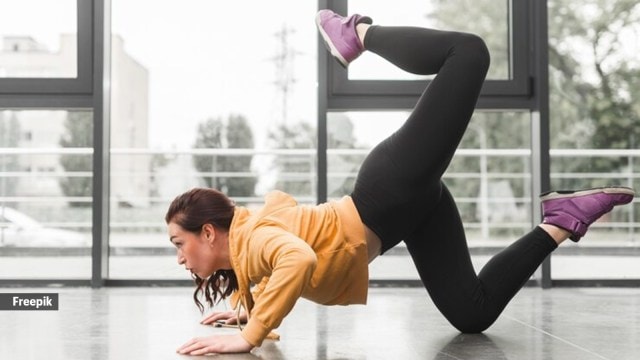📣 For more lifestyle news, click here to join our WhatsApp Channel and also follow us on Instagram
This viral challenge reveals why women might have better balance than men
Expert explains why men and women perform differently in the latest social media balance test
 While social media is filled with videos of people attempting this feat, there seems to be a curious pattern -- women often find it easier than men. (Source: Freepik)
While social media is filled with videos of people attempting this feat, there seems to be a curious pattern -- women often find it easier than men. (Source: Freepik)A new viral challenge has people getting down on all fours, placing their elbows on the ground, and attempting to put their hands behind their backs without falling over. While social media is filled with videos of people attempting this feat, there seems to be a curious pattern — women often find it easier than men. But is there a reason behind this gender difference?
View this post on Instagram
Dr Vajalla Shravani, certified pilates instructor and fitness expert at Tone 30 Pilates, explains that it comes down to our center of gravity. “The center of gravity is a crucial factor in balance and stability. It refers to the point in a body or object where the weight is evenly distributed in all directions,” she notes.
Women’s apparent advantage in this challenge isn’t just coincidence. “On average, women tend to have a lower center of gravity than men due to differences in body composition and fat distribution. Women generally carry more weight around their hips and thighs, while men carry more weight around their upper body, such as the chest and shoulders,” explains Dr Shravani.
The role of muscle distribution
Body composition plays a significant part, too. “Men typically have a higher percentage of muscle mass, especially in the upper body, while women tend to have more fat and muscle distributed around the hips and lower body,” Dr Shravani points out. This difference can make men “top-heavy,” potentially making maintaining balance in certain positions harder.
She adds that women rely more on their core and lower limb muscles for stability. At the same time, men depend more on upper body and trunk muscles, affecting how they maintain balance in different positions.
 The key is consistency and variety in exercises (Source: Freepik)
The key is consistency and variety in exercises (Source: Freepik)
Beyond the challenge
But what does this mean for everyday fitness? Dr Shravani suggests several ways to improve balance regardless of gender:
- Core strengthening exercises like planks and stability ball workouts
- Lower body workouts, including squats and lunges
- Balance training using equipment like Bosu balls
- Functional movements that mirror daily activities
“The key is consistency and variety in exercises, as training different muscle groups and challenging the body’s balance mechanisms can lead to significant improvements,” she advises.
While the viral challenge highlights these differences, Dr Shravani emphasises that individual factors like body size, core strength, and prior training can influence performance. “Not every man will struggle, and not every woman will excel,” making it more of an interesting demonstration of balance differences rather than a definitive test.
📣 For more lifestyle news, click here to join our WhatsApp Channel and also follow us on Instagram
- 01
- 02
- 03
- 04
- 05


























